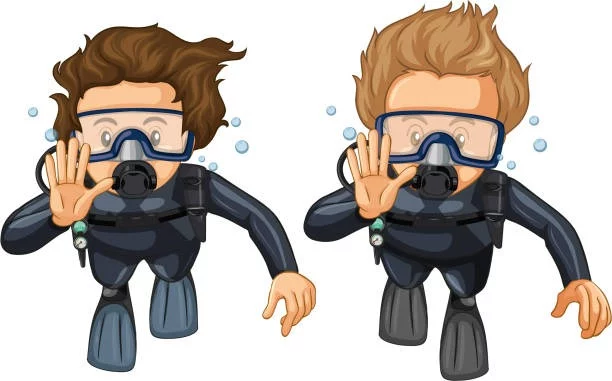When you’re wrapping up a dive, it might be tempting to head straight for the surface—but experienced divers know that the final few minutes underwater are just as important as the rest of the dive. That’s where the safety stop comes in.
A safety stop is a short pause during your ascent, usually made at about 15 to 20 feet (5 to 6 meters) below the surface. It lasts approximately three minutes and is a crucial step in reducing the risk of decompression sickness, also known as “the bends.” Whether you’re diving deep or just hitting recreational depths, a safety stop is a smart habit for every diver.
Why Do Divers Make a Safety Stop?
During a dive, your body absorbs nitrogen from the compressed air you’re breathing. If you ascend too quickly, nitrogen can form bubbles in your tissues and bloodstream, leading to decompression sickness, a potentially serious condition.
A safety stop gives your body a chance to release that excess nitrogen slowly and safely before surfacing. It’s not just a formality—it’s a proven technique that adds an extra layer of protection to your dive plan.
When Should You Make a Safety Stop?
The general rule is to make a safety stop on any dive deeper than 33 feet (10 meters). It becomes especially important when:
- You dive to or beyond 60 feet (18 meters)
- Your dive profile approaches no-decompression limits
- You’ve done multiple dives in a day
- You’ve experienced a fast or uncontrolled ascent
Even if you’ve stayed within safe dive limits, making a safety stop is still highly recommended. It’s a simple precaution that benefits divers of all experience levels.
How to Perform a Safety Stop
- Ascend slowly from your maximum depth, keeping an eye on your dive computer or depth gauge.
- Stop at 15–20 feet (5–6 meters) and hover neutrally buoyant.
- Remain there for at least 3 minutes. Use this time to check your air, review your dive, and simply enjoy the view.
- Continue ascending slowly to the surface when the stop is complete.
If conditions are rough or visibility is poor, use a dive line or reference point to maintain your position during the stop.
Safety Stops Become Second Nature
Once you get used to making safety stops, they’ll feel like second nature. Many divers even find them relaxing—a quiet moment to reflect before surfacing. Dive instructors at Silent World Dive Center in Key Largo ensure that their students understand the importance of safety stops from the outset, making this vital step a lifelong habit from day one.
It’s About More Than Just Depth
Even on relatively shallow dives, your ascent rate and bottom time affect nitrogen levels in your body. That’s why many divers choose to make a safety stop on every dive—just to be cautious. It’s a small time investment with big benefits.
Surface Safe, Dive Smart
In scuba diving, good habits are what separate safe divers from reckless ones. A safety stop may seem like a minor detail, but it’s a powerful way to protect your body, extend your dive career, and set a great example for others.
So next time you’re underwater, plan your dive, stick to your limits, and don’t skip the stop. Your body will thank you.

Lexy Summer is a talented writer with a deep passion for the art of language and storytelling. With a background in editing and content creation, Lexy has honed her skills in crafting clear, engaging, and grammatically flawless writing.



